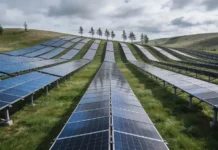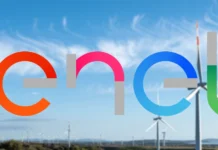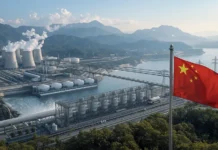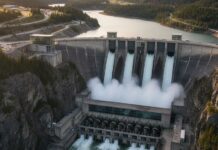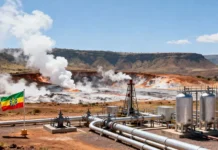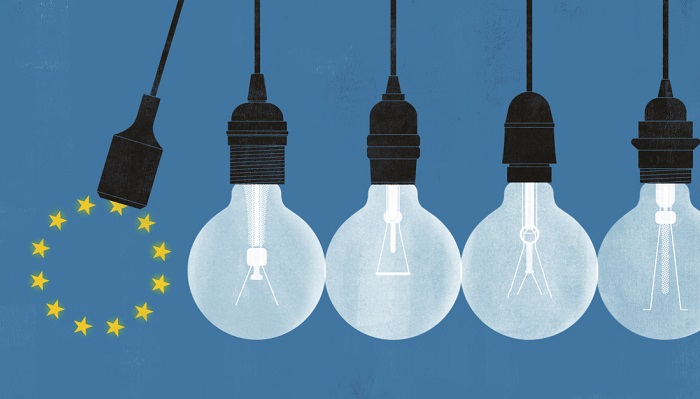A data space for energy within Europe happens to be a key element of the EU’s digitalization action plan, and of course the concept of open data as well as the platform or space so as to deliver it happens to be gathering momentum in other sectors and countries as well.
It is well to be noted that the energy sector goes on to present specific considerations. The sector happens to be largely regulated, but non-discriminatory access to the grid and markets is indeed a key principle that has to be maintained in a data space setting.
Furthermore, European as well as national regulatory bodies happen to be imposing rules and guidelines that go on to affect data management as well as exchange, which also should feed into the design along with the governance.
The fact is that in practice, there is going to be a multiplicity of data spaces, and there will be a requirement for alignment with other data spaces like mobility, which happens to be another need set out in the digitalization action plan, and therefore interoperability will play a major role.
Interoperability approaches within data spaces
The EC goes on to state that a common European data space gets together relevant data infrastructures as well as governance frameworks together so as to facilitate data pooling and sharing. It has in it the deployment of data sharing means along with services and data governance structures, and at the same time, it will improve the availability, quality, and interoperability of the data.
Numerous initiatives are approaching interoperability from various angles, which form the focus of a new position paper from the International Data Spaces Association- IDSA.
The IDSA itself has gone on to define and has also developed mechanisms that are focused strongly on technical as well as semantic interoperability and, with the IDS Rulebook, goes on to offer guidance on how to attain organizational interoperability.
Technical interoperability goes on to deal with applications as well as infrastructures linking systems and services in the data space, while semantic interoperability makes sure of the preservation and understanding of the exact format and meaning of the data along with the information that’s exchanged.
It is worth noting that organizational interoperability, in practice, has in it documenting, integrating, or even syncing business processes and the pertinent information exchanged.
Apparently, the approach of FIWARE happens to foster interoperability with the usage of defined open APIs as well as a growing set of open standard-based smart data models.
The Gaia-X initiative has gone on to define the Gaia-X Trust Framework so as to provide a global set of rules and specifications in order to support data space authorities as well as federations seeking interoperability.
Reference architectures
In addition to these, a number of reference architectures happen to be developed with EU project funding guidance.
The OMEGA-X architecture, for instance, comprises of four main elements: a marketplace, a federated infrastructure, connectors helping with the flow of data and services, and also compliance services.
The ENERSHARE architecture goes on to draw a clear distinction between local and horizontal, with the local building blocks enabling the functionalities that are local to a use case and the horizontal building blocks enabling participation in the data space.
Others happen to be the Data Cellar architecture, having similarities conceptually to OMEGA-X as well as the SYNERGIES architecture, which has two major conceptual layers: an energy data space ecosystem as well as an energy services marketplace.
The EDDIE architecture, on the other hand, happens to be prioritising an overlying data sharing interface, with the first use case stressing in-house smart meter data.
Policy issues
In another policy paper, ETIP SNET happens to address energy data space policy, thereby reviewing specific use cases that have on them the optimization of transmission as well as distribution system operations, instantiation and operation of energy communities, as well as inter-border EV services.
These are considered to depict precise situations in which data sharing enables, on the one hand, to come up with value without the requirement of exchanging the data itself and, on the other hand, so as to foster optimization by way of data-enabled analytics solutions.
Numerous key challenges are identified, having technical issues such as the accessibility of data from smart meters as well as DER devices, the role of the identity management element, and the harmonization of data models along with their components.
As these issues strictly happen to be related to the need to create conditions for customer involvement that are broader, data spaces in this regard are a great opportunity in order to make clear the central role of customers when it comes to data provisions, as the paper points out.
Challenges
The ETIP SNET paper goes on to state that, in general, regulatory as well as technical challenges have to be addressed in tandem so as to avoid further late issues.
From an organizational standpoint, the measures to federate varied initiatives in the ecosystem as well as its long-term maintenance have the foremost importance so as to avoid the possibility of data silos.
Another issue corresponds to the total re-thinking of business processes within the energy sector, with generation as well as grid control having decentralized and even centralized aspects so as to ensure interoperability, and for that matter, regulation must be effective.
The IDSA paper points to the fundamentals of standards for interoperability so as to avoid vendor lock-in, elevate scalability, and also make sure of data protection as well as cybersecurity.
With regards to technical interoperability, for the successful federation of varied data spaces, compatibility within different data connectors, services, as well as trust frameworks has to have the highest priority.
For semantic interoperability, the major challenge in the energy domain happens to be the massive variety of devices, assets, along with applications. It is hence necessary to place more effort on the harmonization of ontologies as well as data models.
Next steps
The numerous architectures that are being portrayed open the way when it comes to sharing experiences, and both papers call for partnership with the potential to pinpoint common ground for use cases in terms of European data space and in order to guide regulation.
The development as well as the rollout of a common European energy data space happen to be in the hands of the European Commission, with the digitalization action plan going to state that the rollout starts no later than 2024.
But it is indeed likely to be potentially delayed. Major industry development input, such as a portfolio of high-level usage cases and their executing details and deliverables required for data exchanges so as to deliver on the objectives of the Green Deal and the Digital Decade, is anticipated from the Data for Energy sub-group of the new still to be coming up Smart Energy Expert Group.
In the plan, Smart Energy Expert Group happened to be scheduled for set up by March last year but was delayed till the second half of the year, with nominations ending November 2023.
In the meantime, the Commission has awarded a contract to a consortium led by Eviden Belgium, a digital solution company, to develop Simpl, a middleware platform, in order to enable cloud-to-edge federations and at the same time support data access along with interoperability within European data spaces.
Simpl is planned to be an open-source stack having modular structure as well as a secure approach so as to give data providers complete control over who goes on to access their data across such data spaces.
While the contract goes on to run for three years, until the end of 2026, a proof-of-concept happens to be expected to be released by this summer, with a minimum viable platform released at the end of 2024.


